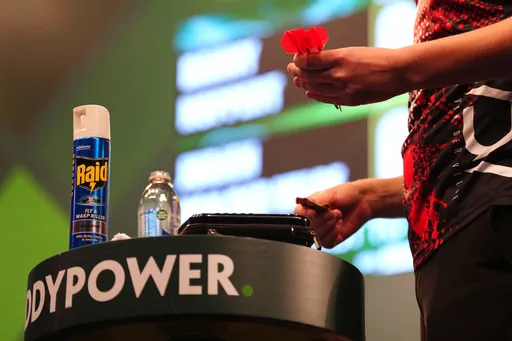Ever since Israel occupied the West Bank, East Jerusalem and Gaza in 1967, Palestinian prisoners in Israeli jails have resorted to hunger strikes as a form of protest to win collective or individual rights.
Since then, there have been more than 25 mass and group hunger strikes. Prisoners have demanded improved conditions, to be allowed family visits, or an end to solitary confinement. Very often, hunger strikes are carried out individually as well, as a last-resort protest against Israel’s practice of the administrative detention of prisoners deemed as a “security threat”. This allows a suspect to be held without trial or charges for six-month terms that can be renewed indefinitely. Prisoners in administrative detention normally demand to be either charged or released.
In some cases, the hunger strikes resulted in victories for the Palestinian prisoners’ movement, or in the release of a detainee. In others, they failed to achieve their goals, or succeeded in only temporarily improving conditions. Indeed, some Palestinian prisoners who were released after a hunger strike were later rearrested. In the 1970s and 1980s, at least four Palestinian prisoners died as a result of force-feeding. This, according to the UN, is “tantamount to cruel, inhuman and degrading treatment”. Israel passed a law in 2015 to allow the force-feeding of prisoners on hunger strike if sanctioned by a court, but Israeli doctors’ associations have mostly opposed the practice as medical professionals see forced medical treatment as unethical.
Palestinian prisoner Hisham Abu Hawash ended a 141-day hunger strike on January 4, after reaching a deal with the Israeli authorities that he will be released once the six-month term of his administrative detention expires. His strike, one of the longest in Palestinian history, had left him in “imminent danger of death”, according to the NGO Physicians for Human Rights. Abu Hawash, 40, from the southern West Bank town of Dura, near Hebron, has been held in Israeli prisons since October 2020. He was the last of 17 Palestinian prisoners on hunger strike over detention without charge or trial since July 2021.
Hunger strikes have long been used by political prisoners around the world as a means to reclaim rights: the suffragettes used them to draw attention to their demand that women be given the right to vote, while the death of IRA leader Bobby Sands in 1981 changed the course of the conflict in Northern Ireland.
Up until the 1990s, most strikes by Palestinian detainees demanded better conditions – from stationery to write letters to their loved ones, to edible food, more air in their cells and beds rather than rubber mattresses. From the 1990s onwards, individual and collective strikes have been largely against indefinite detention without charge.
Here is a timeline of notable hunger strikes that defined the history of the Palestinian prisoners’ movement.
February-March 1969 : “Yes, sir” first collective hunger strike, Ramle and Kfar Yona prisons, 11 days
Prisoners protested against meagre portions of bad quality food and demanded that stationery be allowed into the prison. They also wanted more yard time and protested against being forced to address prison guards with a “yes, sir”. The strikes ended with a crackdown on prisoners, with many put in solitary confinement.
April-May 1970: First women prisoners’ strike, Neve Tirza prison, 9 days
Prisoners demanded access to women’s sanitary supplies as well as an end to beatings and solitary confinement. In response, they were subjected to humiliation and punishment, but some of their demands were met, including allowing sanitary products in and extending the time they were allowed outdoors.
July 1970: First Palestinian dies on hunger strike, Ashkelon prison, 7 days
Abdul Qader Abu al-Fahm died as a result of force-feeding during a strike to demand improved prison conditions. At the time, prisoners were beaten and fed scarce food. None of their requests were met.
July-August 1980: “Don’t let us die in the desert”, Nafha prison in the Negev desert and others, 32 days
Detainees at Nafha prison in the Negev desert faced particularly harsh conditions. In a letter to the United Nations Secretary General in 1980, the permanent representative of Qatar Jasim Jamal sought to draw attention to the “suspicious” death of two prisoners during the hunger strike, Shehdeh Mohammed Al-Ja'afari and Rassam Mohammed Halawa, later found to have died of force-feeding. The strikers eventually achieved their demands. Beds were set up for the first time in Nafha and other prisons, and cell sizes were extended.
We appeal to our people and to all peoples of the world, and declare that the mind which designed this prison in terms of its structure and life conditions, did so with a clear intention to simply liquidate us physically. We are facing a conspiracy of murder in cold blood (...) We appeal to you not to let us die in the desert. All what we demand is air to breathe and conditions that are given to Jewish prisoners.
September-October 1984: historic gains for prisoners including access to TV and clothes. Juneid prison, Nablus, 13 days
More than 700 prisoners joined the strike at the prison in Nablus, in the northern West Bank. The strike is considered a turning point as prisoners achieved many of their demands, including access to television and radio, as well as clothes.
December 2011-February 2012: Khader Adnan reaches deal to end his detention without charge, 66 days
The case of Palestinian prisoner Khader Adnan, who refused food for 66 days to protest his administrative detention without charge or trial, attracted worldwide attention. He agreed to end his hunger strike after a deal was struck for his release. Adnan, who is affiliated with the Islamic Jihad movement, would later be re-arrested and engage in more hunger strikes in protest.
April-May 2012: 2,000 on hunger strike against detention without charge or trial. Various prisons, 28 days
Approximately 2,000 prisoners took part in a hunger strike to demand an end to administrative detention and punitive measures such as isolation and denial of family visits. Four of the hunger strikers spent over two months without food. In a deal brokered by Egypt and Jordan, Israel agreed to limit administrative detention to six months unless new evidence emerged against a suspect. In total, 400 prisoners from Gaza were allowed to receive family visits and those in solitary confinement were returned to normal cells.
When you feel that all the doors are sealed, and you stand there humiliated and alone, knowing in advance that the court system is a charade, one is left with no other option but a hunger strike.
August 2012-April 2013: Samer Issawi ends the longest ever fast after securing his release, 166 days
Issawi, a member of the Democratic Front for the Liberation of Palestine (DFLP), survived only on intravenous vitamins and minerals for a record-breaking half year. Issawi started the hunger strike to protest his re-arrest following his release as part of a prisoner swap deal to free kidnapped Israeli soldier Gilad Shalit. He had been originally sentenced to 26 years for his involvement in shooting attacks during the second Intifada in 2002.
April-May 2017: 1,500 prisoners on strike led by Fatah leader Marwan Barghouti, 40 days
Popular jailed politician Marwan Barghouti led a hunger strike to demand better conditions for prisoners. Barghouti was sentenced to five life sentences for murder by an Israeli court in 2004 for his role in the Intifada. Despite controversy over the Fatah leader being seen eating in a video during the strike, Barghouti’s popularity was only strengthened by the end of it, when a deal was reached with the Israeli authorities.
July 2021-January 2022: 17 administrative prisoners on hunger strike. Ends with Hisham Abu Awash deal after 141 days
Hisham Abu Awash was the last of 17 prisoners who began a hunger strike against their administrative detention in July 2021. Four of them, including Abu Hawash, were pushed into more than 100 days on strike and in critical condition. All reached deals with the Israeli authorities that their detention without charge or trial would not be renewed at the end of the six-month term. Abu Hawash had been detained in October 2020.
























